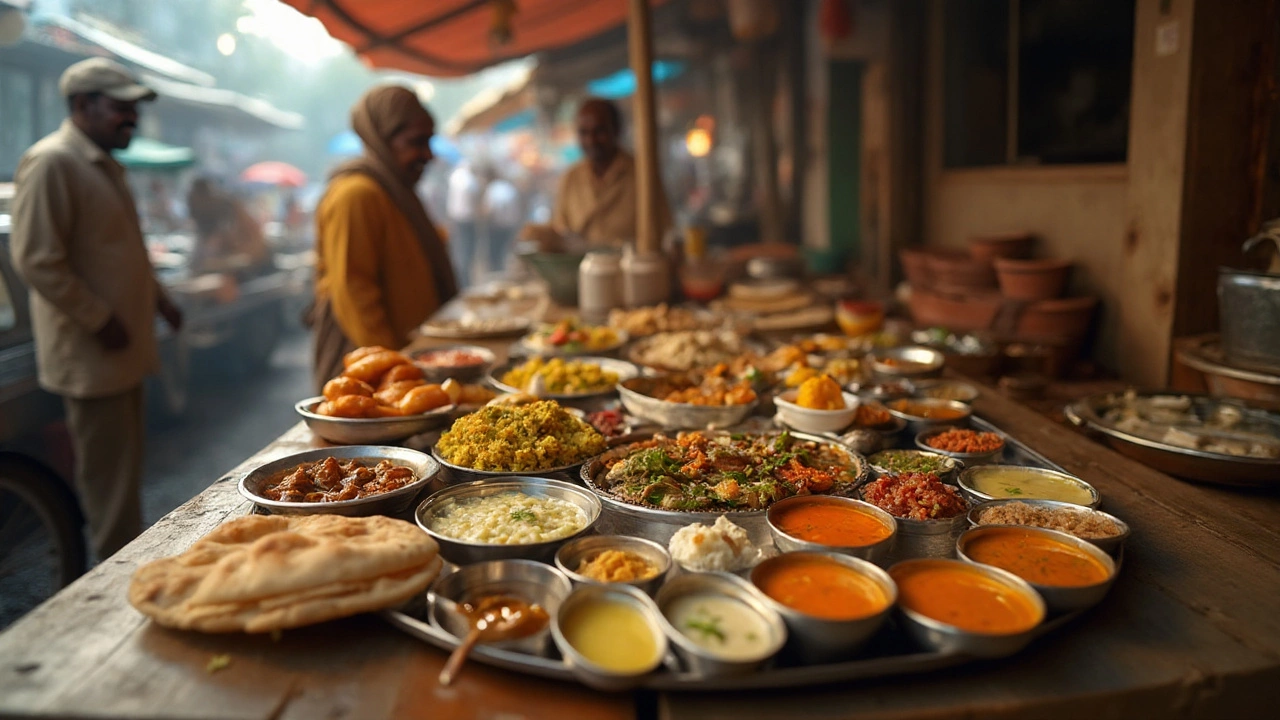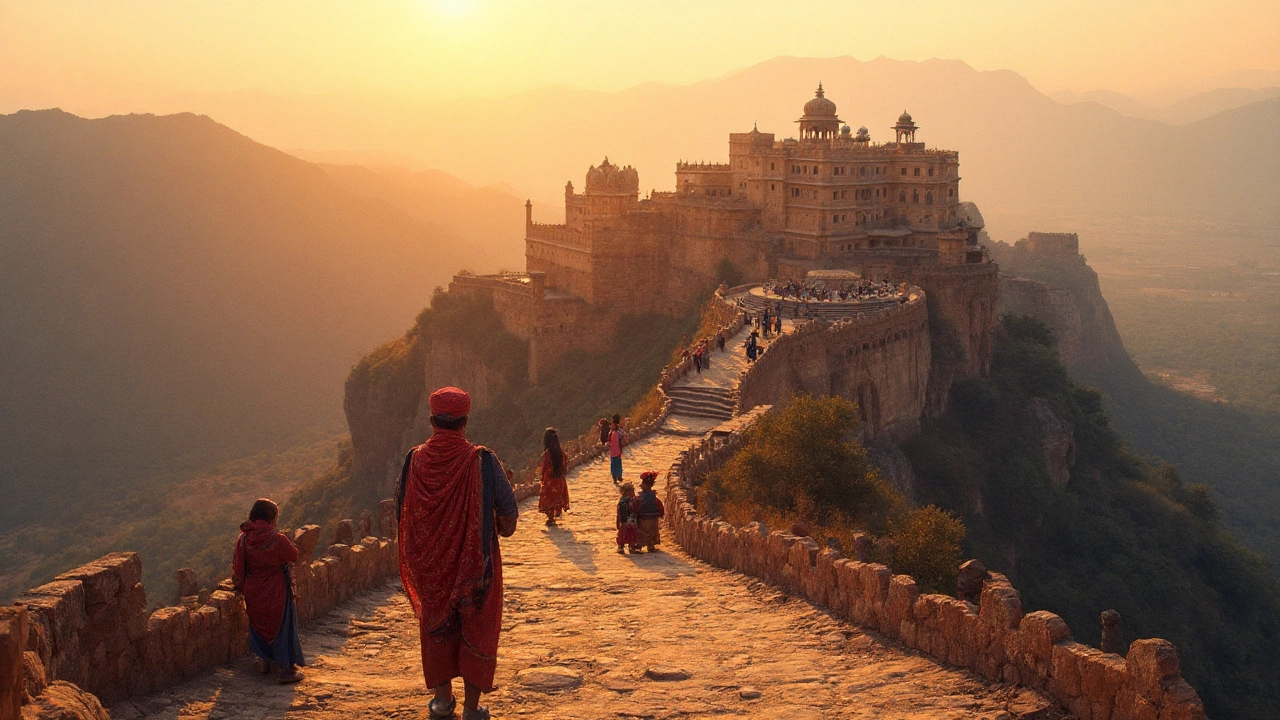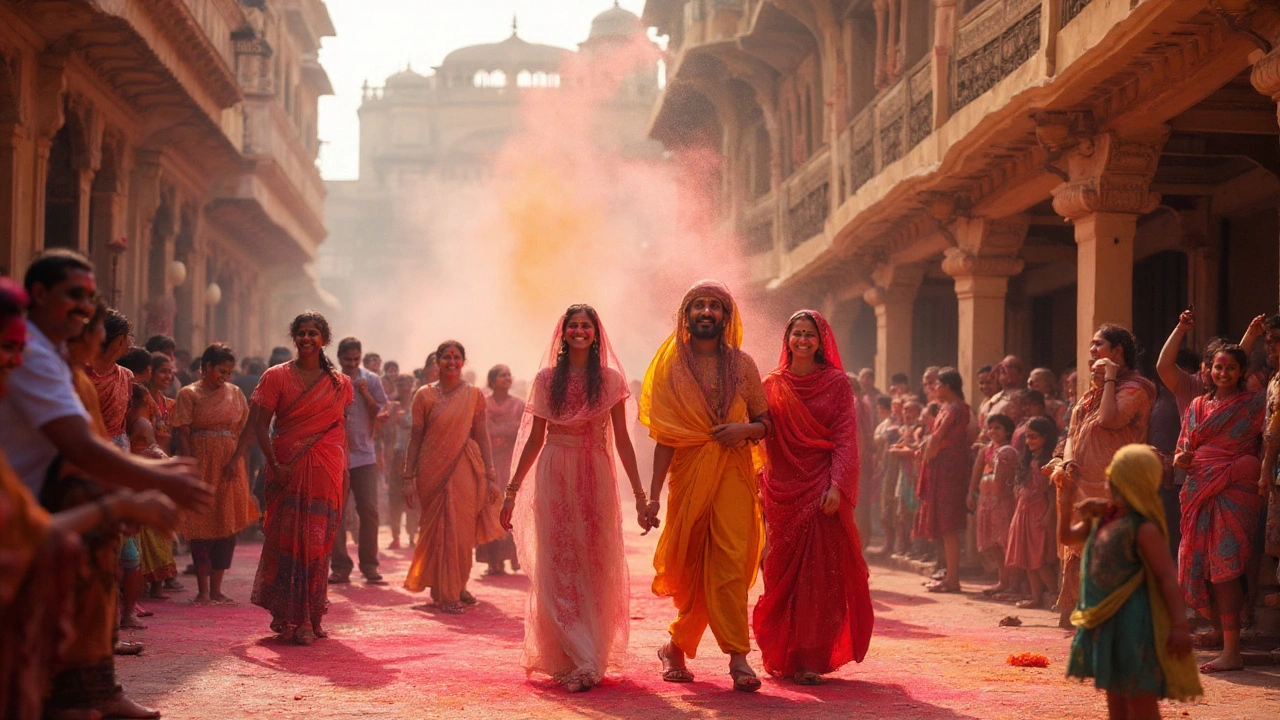Try picturing a country where holy cows wander down the street, locals start a conversation with you in a crowded market, a dash of incense blends with the smell of fresh spices, and you could spot a 1,000-year-old temple beside a neon-lit juice stall. Yes, it gets loud, it gets crowded, but India's tourism magic comes from this wild, beautiful, and totally unique mix. It grabs you in unexpected ways—one minute you're gazing at a palace, and in the next you're eating the spiciest street food with locals laughing over chai. People don't just talk about visiting India; they tell stories that sound like scenes straight from a Bollywood movie. This country doesn't fit in a neat box, and that's exactly why it's packed with travelers of every age—from newlyweds hunting for honeymoon bliss in Kashmir to retirees trekking in Sikkim. Here's why India is such a magnet for tourists all year round—and why you just can't compare it with anywhere else.
Culture Bursting at the Seams: Why Everyday Life Feels Like a Festival
Forget trying to blend in—India's culture is about standing out. Step off a plane in Delhi or Chennai and you’re instantly swept into a rush of color, conversation, and rituals that have been passed down for generations. Bright saris flutter outside tiny tea shops, Bollywood songs blare from rickshaws, and people everywhere seem busy celebrating something. It doesn't matter what time of year you go; there's always a festival happening. In spring, Holi turns city blocks into paint wars—kids and grandparents flinging powder like it’s confetti. Come fall, Diwali lights up entire cities so it feels like every rooftop’s throwing its own fireworks show. If you’re there during Ganesh Chaturthi or Durga Puja, don’t be surprised if traffic stops for massive floats or a parade snakes past your hotel.
Travelers love how easy it is to join in, even if you don’t know the prayers. At weddings, guests hand you sweets and drag you onto the dance floor. If you wander into a small temple in Tamil Nadu, locals might tie a piece of red thread around your wrist for luck. There’s no need to play it cool—Indians adore when visitors get curious about local traditions, whether it’s peeking into a neighborhood Eid celebration or buying little diyas (clay lamps) for Diwali from the market. You’ll see cultural pride everywhere, from schoolkids in crisp uniforms reciting national songs to families picnicking with homemade samosas on the city’s flower-flooded lawns. It’s not just about ancient history either; modern India is buzzing with street art in Mumbai, stand-up comedy clubs in Bangalore, and thriving indie music festivals where teenagers dance barefoot.
You want tips? Lean in and say yes to every invitation, even if you have no clue what’s happening—especially if you have kids traveling with you. My own kids, Lorelei and Finn, still talk about being handed marigold garlands during a village ceremony, or being smeared with maroon powder at Holi. Local festivals, from North India’s wild Navratri dances to the peaceful Buddhist Thimphu Tshechu in Ladakh, stick in your memory long after you leave. If you want a crash course in real Indian culture, take a walk at dawn—and watch a city wake up to chanting, temple bells, and school buses beeping in the mist. The energy is real, and it’s contagious.
History at Every Turn: Forts, Palaces, and Ancient Cities
India might have the oldest civilization still buzzing with life. You’ll spot ancient ruins a few feet from pizza shops, grand palaces filled with peacocks, or centuries-old forts peeking out over city skylines. The Taj Mahal gets all the love, and for good reason—it’s pure marble perfection, built by Mughal emperor Shah Jahan for his favorite wife in the 1600s, and it honestly looks unreal in the sunrise glow. But travelers quickly realize there’s way more than the postcard landmarks. Jaipur’s massive Amber Fort lets you ride an ornately decorated elephant up the battlements, and you get this sweeping view that makes you forget you’re standing in the middle of a modern city. In Mysore, a palace flickers with 100,000 lights every Sunday night, while nearby Hampi has ancient boulders and temple ruins you can climb right over.
Some cities feel like living museums—just try walking the crowded lanes of Varanasi, where people have been doing morning prayers by the Ganges River for nearly 2,500 years. Even Goa, famous for its beaches, hides crumbling churches from Portuguese times and quiet colonial mansions. If you’re a history buff, check out Ajanta and Ellora caves for 2,000-year-old Buddhist artwork carved straight into a cliff—or stroll the old French part of Pondicherry, which looks like a slice of Europe dropped on India’s southeast coast. You’ll never run out of UNESCO World Heritage Sites here—India has 42, the sixth highest count in the world—and they’re sprinkled all over, not just in touristy spots.
Travel tip: book a homestay, not just a hotel. You get stories about local kings, lost treasure, and hidden courtyards you’d never find on a typical tour. In Rajasthan, my kids played hide and seek in medieval havelis (old mansions), while the host explained how his ancestors were camel traders. In Kerala, a guide showed us ruins of a synagogue, then told us how spices changed the course of world trade. Everything you touch and see seems to have a few layers of history attached—and locals take pride in sharing legends passed down from their grandparents. If you like exploring with a bit of mystery, wander at night, when old forts and palaces are floodlit and ghost stories seem a little more real.

Jaw-Dropping Natural Wonders: From Snow Peaks to Tropical Jungles
Think India’s all about temples and chaos? Wait until you see the landscapes. North India is wrapped in the snowy Himalayas—home to adventure junkies, monks, and the kind of mountain scenery that makes you want to put your phone down and just stare. In Ladakh, you’ll find blue lakes surrounded by prayer flags, and monasteries perched so high you half expect to see yetis. Shimla and Darjeeling have old hillside toy trains chugging past tea estates, while Sikkim swaps snow for orchids and wild red rhododendrons.
Now zoom south, and the scenery flips. Kerala is famous for its backwaters, where you can float in a houseboat, eat spicy fish curry, and wake up to the sound of kingfishers. The Nilgiri and Western Ghats mountain ranges are thick with greenery, waterfalls, and rare wildlife (spotting elephants isn’t just for the zoo here). The deserts of Rajasthan glow golden at sunset, and you might even catch a camel caravan cruising past a sand dune. India’s coastline is over 7,500 kilometers long—so there’s a good chance you’ll find a palm-shaded beach you’ve never heard of. Goan beaches are lively, full of food stalls and water sports, but places like Gokarna or Andaman’s Radhanagar Beach feel like secret getaways.
| Top Natural Destinations | Main Attraction | Best Time to Visit |
|---|---|---|
| Ladakh | Leh Monasteries, Pangong Lake | June to September |
| Kerala Backwaters | Houseboat Cruises, Birdwatching | November to February |
| Goa | Beaches, Night Markets | November to March |
| Ranthambore | Tigers, Safari | October to June |
| Valley of Flowers | Wildflowers, Trekking | July to September |
If you're an animal lover, India's home to the world’s only free-ranging Asiatic lions (in Gir Forest), Bengal tigers (in Ranthambore, Bandhavgarh), and wild rhinos (Kaziranga National Park). My daughter Lorelei once counted nine peacocks and two monkeys before even eating breakfast—it’s that kind of place. Trekking, rafting, rock climbing, skiing, paragliding—it’s all possible. If adventure’s not your thing, just grab a hammock and breathe. Even cities like Mumbai and Kolkata have pockets of wild, green spaces where kite flyers and bird watchers meet.
The Food Scene: More Than Just Curry and Chai
If you ask people what they remember most from their India travels, food almost always makes the list. It’s intense, flavorful, and crazy diverse. North India brings on buttery naan, creamy dal, and street stalls serving samosas so good they make your eyes water. South India’s got crispy dosas the size of your arm and coconut-laced curries. And that’s not even mentioning the seafood feasts in Goa, spicy chaats in Delhi, Tibetan momos in Sikkim, or melt-in-the-mouth biryani in Hyderabad.
Here’s a fun fact: India has more vegetarians per capita than any other country (almost 40%), so if you travel with dietary restrictions, you’ll eat like royalty. Even tiny roadside cafes offer eggless cakes and vegan-friendly dishes. If you’re a meat lover, don’t worry—grilled kebabs and mutton dishes are on every menu in places like Lucknow and Kolkata.
Don’t just stick to restaurants—hit the markets. In every town, you’ll run into a fruit vendor selling mangoes that taste like pure sunshine, or a sweet shop dishing out laddoos and jalebis warm from the skillet. Locals eat with their hands, sip sugarcane juice from carts, and argue over who makes the best masala chai. If you’re feeling brave, try the spicy street foods but carry some bottled water if you’re not used to the heat. My son Finn still brags about the time he tried chili paneer in a Delhi market and didn’t reach for water once (his red face said otherwise).
And yes, the food can be super spicy—but most places will tone it down if you ask. Don’t miss thalis (big platters with lots of small dishes), which let you sample everything from tangy pickles to creamy desserts—think of it like a multi-course meal, Indian-style. For a special treat, book a cooking lesson or food walk. In Jaipur, I joined a grandmom-and-daughter duo who taught me real Rajasthani dishes—and honestly, you can’t beat home-cooked flavors. Got allergies? Just say so—Indians are used to special requests, and they’ll usually bend over backwards to help.

Insider Tips for Travelers: Staying Safe, Savvy, and Sane
Planning a trip to India can feel intimidating—between the bustling cities, new languages, and the sheer sensory overload. But with a bit of street smarts, you’ll travel like a pro. First up, pack light and dress for the weather: India’s hot from March to June (bring loose, cotton clothes), then beautifully cool from November to February. If you’re visiting temples or rural areas, cover your knees and shoulders. It’s about respect—plus, it actually helps you keep cool and dodge mosquito bites.
Always drink bottled or filtered water—don’t risk tap water, even in five-star hotels. Hand sanitizer is your friend, especially in markets or on trains. Traffic can be wild, so look both ways and cross with locals. When booking taxis or rides, use official apps (like Ola or Uber) rather than waving at random cabs, especially late at night. Women travelers: solo travel is common and mostly safe if you stick to busy places, avoid walking alone late at night, and dress modestly. Take copies of your passport, watch out for pickpockets in crowded places, and keep your valuables zipped up.
India’s train network is the world’s third largest, carrying over 23 million passengers every single day—that’s almost the whole population of Australia on rails! Train travel is an experience by itself, but book early and shell out a little extra for AC classes if you can (makes the trip way more comfy and cool). If you’re traveling with kids, remember there’s no such thing as “too many snacks” or “too many games” for a long ride. Noise-canceling headphones? Game changer. Get a local SIM card for cheap data—Google Maps and translation apps save a ton of hassle. Indian people are super helpful, so never hesitate to ask directions or tips, even if you land up with more answers than you needed.
Bargaining is part of shopping in most markets. Don’t be shy—smile, start low, always stay cheerful. Tipping is expected at restaurants (5-10%), and drivers will wait hopefully for a little extra too. If you want to avoid tourist scams, check rates online before big purchases, and lean on your hotel or host for honest advice. Traveling with kids? India’s an endless playground—locals adore children, so expect lots of attention and spontaneous offers for snacks or selfies.
Best of all, be flexible. If a train’s late or a tour takes an unexpected turn, just go with it. You’ll find the unexpected detours often make the best stories. And if one meal feels a bit much or you miss a sight, remember—India will never run out of magic, just waiting to be found by the curious and the brave.
